Category: Recommended Reading
Mysteries Of Architecture
Marco Roth at n+1:
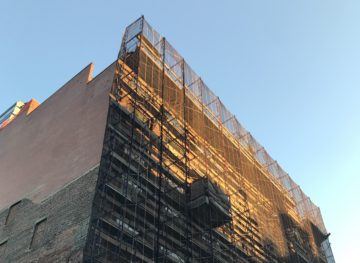 But what does it mean when a building comes into existence as architecture only by accident—through contingency—under the erotic and transgressive conditions of an observer who was not supposed to be there seeing what was never supposed to be seen? There’s no usable lesson about “design” here, or urbanism, that the developer and his paid draughtsfolk might take away. No change to public policy or city codes. The experience of what we might think of as “the architectural,” in this instance, runs counter to every single intention behind the creation of this generic reflecting structure. It’s an experience born of incompleteness, of transience, like the spring itself.
But what does it mean when a building comes into existence as architecture only by accident—through contingency—under the erotic and transgressive conditions of an observer who was not supposed to be there seeing what was never supposed to be seen? There’s no usable lesson about “design” here, or urbanism, that the developer and his paid draughtsfolk might take away. No change to public policy or city codes. The experience of what we might think of as “the architectural,” in this instance, runs counter to every single intention behind the creation of this generic reflecting structure. It’s an experience born of incompleteness, of transience, like the spring itself.
I think sometimes that I live in the city in order to be able to experience nature more fully, in just these ways, at the moment when it takes fleeting vengeance against the buildings that have betrayed her. I no longer love the city for itself, as I once did, and all these stacked boxes meant to contain and mirror and project wealth, power, and property recall those sections of cemeteries where cremated remains are stored in stacked white drawers.
more here.
Alice Neel
J. Hoberman at The Point:
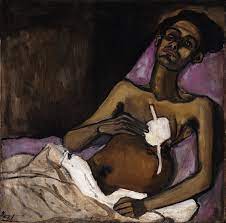 Neel was, to use a much-abused word, a humanist—and not only because she was a figurative painter. Unlike ponderously performative portraitists like Francis Bacon and Lucian Freud, Neel did not objectify her subjects. She looked at them, and very often, they stared back at her. You might call her portraits a frank exchange of views. The gray-eyed woman who is the subject of “Elenka” (1936) could perform laser surgery with the intensity of her gaze. The expression on the face of Neel’s dying mother, bundled in a flannel robe, shrinking back and propped in a chair for “Last Sickness” (1953), is a lacerating blend of fear, reproach and shame. One of the two kids portrayed in “The Black Boys” (1967) is resigned, whereas the other, staring straight at the viewer, makes a challenge of his boredom.
Neel was, to use a much-abused word, a humanist—and not only because she was a figurative painter. Unlike ponderously performative portraitists like Francis Bacon and Lucian Freud, Neel did not objectify her subjects. She looked at them, and very often, they stared back at her. You might call her portraits a frank exchange of views. The gray-eyed woman who is the subject of “Elenka” (1936) could perform laser surgery with the intensity of her gaze. The expression on the face of Neel’s dying mother, bundled in a flannel robe, shrinking back and propped in a chair for “Last Sickness” (1953), is a lacerating blend of fear, reproach and shame. One of the two kids portrayed in “The Black Boys” (1967) is resigned, whereas the other, staring straight at the viewer, makes a challenge of his boredom.
Nearly four decades after her death, Neel reappears as an avatar of art-world diversity. If in 1974, she was hailed as a feminist (another term she uneasily accepted), she now is a woman who shucked off her white middle-class privilege.
more here.
What Ilhan Omar Actually Said
Elizabeth Bruenig in The Atlantic:
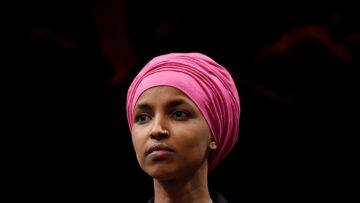 By the time Republicans and centrist Democrats had united late last week to scold Representative Ilhan Omar for a tweet—one of the few pastimes that still draw the two parties together, and something those selfsame chiders would doubtlessly decry, under different circumstances, as cancel culture or censorship—it no longer mattered what, exactly, Omar had said. They had already managed to make a news cycle out of it: mission accomplished. Now, following Democratic outrage and Republican calls for a floor vote to strip Omar of her committee assignments, let me record the following for posterity: Omar demonstrably did not say what she’s been accused of having said; what she did say was true; and every politico using this opportunity to take a swing at her likely knows those two things—they just think you don’t.
By the time Republicans and centrist Democrats had united late last week to scold Representative Ilhan Omar for a tweet—one of the few pastimes that still draw the two parties together, and something those selfsame chiders would doubtlessly decry, under different circumstances, as cancel culture or censorship—it no longer mattered what, exactly, Omar had said. They had already managed to make a news cycle out of it: mission accomplished. Now, following Democratic outrage and Republican calls for a floor vote to strip Omar of her committee assignments, let me record the following for posterity: Omar demonstrably did not say what she’s been accused of having said; what she did say was true; and every politico using this opportunity to take a swing at her likely knows those two things—they just think you don’t.
What did Omar say? Context is key. In 2020, the Trump administration imposed sanctions on International Criminal Court prosecutors who moved to investigate potential U.S. war crimes in Afghanistan as well as potential Israeli crimes in the West Bank, East Jerusalem, and Gaza, arguing that because the U.S. and Israel aren’t members of the ICC, the court has no right to adjudicate such matters. (The ICC recognizes the State of Palestine as a party to its governing statute, a decision that the U.S. insists the ICC lacks the power to make.) Omar vocally opposed the sanctions—as did the European Union, the president of the ICC’s Assembly of States Parties, Senator Patrick Leahy, and, presumably, anyone skeptical of America’s willingness to look into its own savagery abroad.
During a June 7 budget hearing, Omar asked Secretary of State Antony Blinken a series of questions based on the ICC incident. First, Omar praised Blinken for lifting the Trump-era sanctions. Then she pointed out that he nevertheless still opposed an ICC investigation into war crimes in Afghanistan and Palestine—including, in the first case, offenses allegedly perpetrated by the U.S., the Afghan national government, and the Taliban; and, in the second, Israeli security forces and Hamas. Omar asked, “Where do we think victims are supposed to go for justice? And what justice mechanisms do you support?”
To which Blinken replied, more or less, that the U.S. and Israel are competent to adjudicate all of the above. This raised the obvious question Then why haven’t they?, but Omar’s time was up, and she politely yielded to the next representative. Later that day, Omar’s official Twitter account shared a video and tweeted a paraphrase of the exchange. The tweet read, in its entirety: “We must have the same level of accountability and justice for all victims of crimes against humanity. We have seen unthinkable atrocities committed by the U.S., Hamas, Israel, Afghanistan, and the Taliban. I asked @SecBlinken where people are supposed to go for justice.”
More here.
Why Evolution Is Ageist
Amy Maxmen in Nautilus:
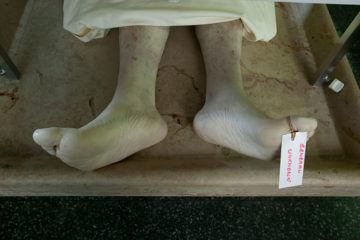 Every time he bent over a freshly dead body, pathologist George Martin pondered the diversity before him. Although his cadavers almost always belonged to the elderly, they varied dramatically. One would have intestines pocked by polyps. Another’s arteries were plugged with plaque. Variety even existed within the same types of disease. For instance, the location of beta amyloid deposits in the brain of people who’d suffered from Alzheimer’s differed significantly. If each type of malady shared the identical underlying cause, bodies ravaged by that cause should look similar in death. But they didn’t. “I never saw two people who had aged in the same way,” Martin says.
Every time he bent over a freshly dead body, pathologist George Martin pondered the diversity before him. Although his cadavers almost always belonged to the elderly, they varied dramatically. One would have intestines pocked by polyps. Another’s arteries were plugged with plaque. Variety even existed within the same types of disease. For instance, the location of beta amyloid deposits in the brain of people who’d suffered from Alzheimer’s differed significantly. If each type of malady shared the identical underlying cause, bodies ravaged by that cause should look similar in death. But they didn’t. “I never saw two people who had aged in the same way,” Martin says.
Martin read everything he could on aging. He took particular interest in observations showing how organisms ranging from clonal yeast to human twins had wildly different lifespans. One of the more dramatic examples were reports of tiny worms, Caenorhabditis elegans, that varied in lifespan by up to five-fold even when the worms were genetically identical and lived in identical laboratory surroundings.
Biologists know how chance events in the environment (such as getting hit by a bus) impact lifespan. And they understand the role of chance in genetics (such as inheriting genes for Huntington’s disease and certain cancers). But it now seems a third realm of uncertainty emerges as animals grow older, causing them to age in different ways. Researchers are only beginning to figure out the basis of biological fluctuations that build up over time. Some result from mutations that slip into the genomes within cells as they replicate. Others occur because of changes in molecules that either shut off or activate genes.
More here.
Tuesday Poem
Untitled
If the cosmos
loves repetition
and variety, why
struggle? All
things carry the
weight of
creation, so
why judge? We
are a never ending
dream of matter
diving in and
out of existence,
our turgid well of
consciousness
enduring our
dismissals, evading
our immortality—
what becomes
an empty vessel
drifting through
space, trying
to piece us together
again.
by Robert Darlington
from Poetry Feast
Monday, June 14, 2021
3 Quarks Daily Welcomes Our New Monday Columnists
Hello Readers and Writers,
We received a large number of submissions of sample essays in our search for new columnists. Most of them were excellent and it was very hard deciding whom to accept and whom not to. If you did not get selected, it does not at all mean that we didn’t like what you sent; we just have a limited number of slots and also sometimes we have too many people who want to write about the same subject. Today we welcome to 3QD the following persons, in alphabetical order by last name:
- Omar Baig
- Dick Edelstein
- Deanna K. Kreisel
- David J. Lobina
- Derek Neal
- Nicola Sayers
- Ethan Seavey
- Danielle Spencer
I will be in touch with all of you in the next days to schedule a start date. The “Monday Magazine” page will be updated with short bios and photographs of the new writers on the day they start.
Thanks to all of the people who sent samples of writing to us. It was a pleasure to read them all. Congratulations to the new writers!
Best wishes,
Abbas
Sunday, June 13, 2021
The danger of relegating beauty to the trivial pursuit of pleasure
Joshua Hren in The Hedgehog Review:
 “Beauty,” David Hume held, “is no quality in things themselves: It exists merely in the mind which contemplates them; and each mind perceives a different beauty.” If this were the case, then the human race’s radical disagreements over aesthetical evaluations would be reducible to harmless preferences. Inclined as we might be to enthusiastically espouse our favorite music as “beautiful,” honesty would require that we chasten our speech, opting for the more modest “beautiful for me,” or—better yet—“I like it,” and nothing more.
“Beauty,” David Hume held, “is no quality in things themselves: It exists merely in the mind which contemplates them; and each mind perceives a different beauty.” If this were the case, then the human race’s radical disagreements over aesthetical evaluations would be reducible to harmless preferences. Inclined as we might be to enthusiastically espouse our favorite music as “beautiful,” honesty would require that we chasten our speech, opting for the more modest “beautiful for me,” or—better yet—“I like it,” and nothing more.
Not a few foes of moral relativism hold to a wholesale aesthetical tolerance, a permissive disposition toward what is called “beauty.” According to this breakdown, we ought to be morally outraged by fraudulence but can in good conscience soak up artless, sentimental movies stamped with “family values”—as if the ugly, caricatured portrayal of things so overwhelmingly good were not an insult, not to say a borderline crime. We shall not murder but there are no nots or oughts governing our responses to Michelangelo.
In very different ways, both the novelist Henry James and the philosopher Dietrich von Hildebrand make the case that moral disfigurement can be ugly and that aesthetic misjudgments can correspond to vicious poverty of the moral variety. They rally praise for the beauty of self-transcendence even as they caution all comers who would relegate aesthetics to the trivial pursuit of pleasure.
More here.
The fascinating science of pleasure goes way beyond dopamine
Dean Burnett in Psyche:
 Our ability to experience pleasure, as in the fundamental sensation of something being enjoyable or ‘nice’, is a product of what’s known as the ‘reward pathway’, a small but crucial circuit found deep within the brain. As you might suspect, dopamine is the main neurotransmitter involved in the function of the reward pathway. Hence why it’s often called the dopamine reward pathway. So, if the activity of dopamine in the brain makes a vital contribution to the sensation of pleasure, and pleasure is a key aspect of happiness, then it stands to reason that boosting your dopamine levels will make you happier, right?
Our ability to experience pleasure, as in the fundamental sensation of something being enjoyable or ‘nice’, is a product of what’s known as the ‘reward pathway’, a small but crucial circuit found deep within the brain. As you might suspect, dopamine is the main neurotransmitter involved in the function of the reward pathway. Hence why it’s often called the dopamine reward pathway. So, if the activity of dopamine in the brain makes a vital contribution to the sensation of pleasure, and pleasure is a key aspect of happiness, then it stands to reason that boosting your dopamine levels will make you happier, right?
There’s a superficial logic to this way of looking at things. Unfortunately, the logic doesn’t hold given the daunting complexity and interconnectedness of our brains. There’s a wealth of evidence to demonstrate that simply ‘boosting your dopamine’ doesn’t automatically result in happiness. And it comes via research into Parkinson’s disease.
More here.
Xi’s Historic Mistake
J. Bradford DeLong in Project Syndicate:
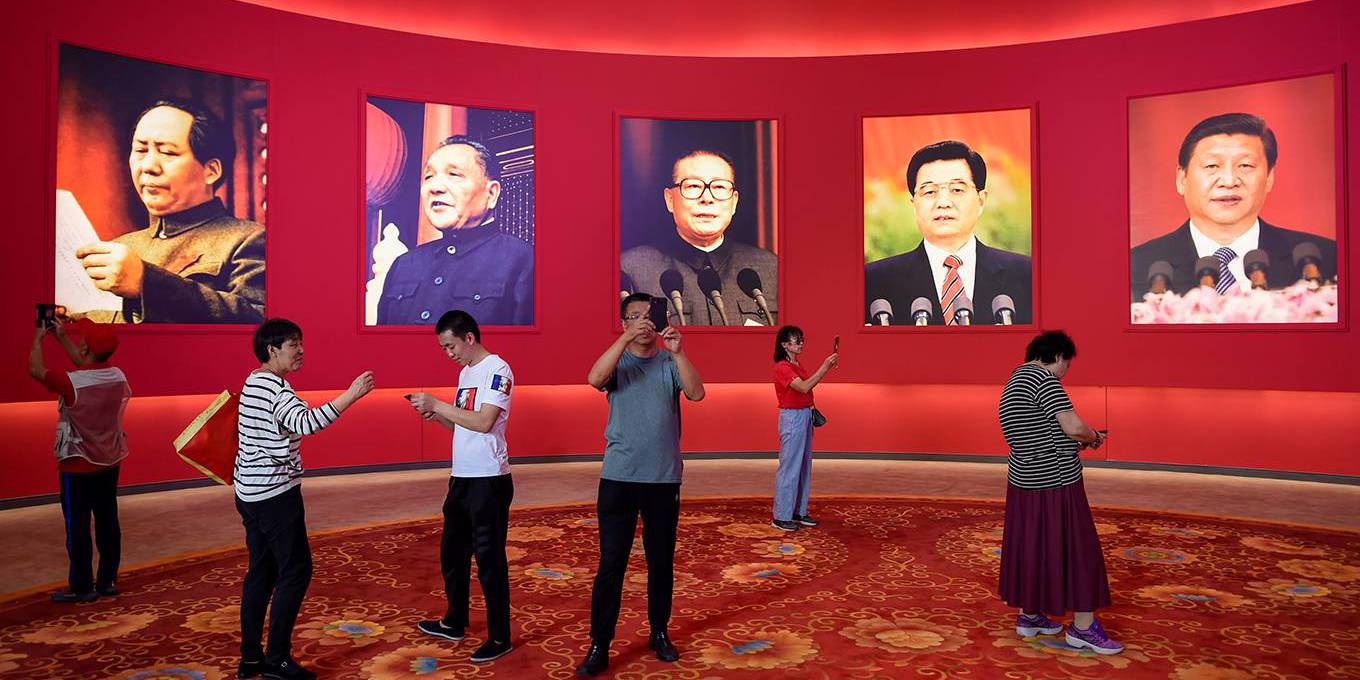
Late last month, the American actor John Cena issued a groveling public apology after having referred to Taiwan as a “country” in an interview to promote his latest film. Though he was using the term to refer to a linguistic media market with a discrete distribution channel, not to the status of the island of Taiwan in international law, the Chinese government would make no allowance for such distinctions.
What are we to make of this episode? Clearly, globalization has gone terribly wrong. The speech restrictions dictated by China’s authoritarian government apply not just to China but also, and increasingly, to the outside world. Even in my own day-to-day experience, I have noticed that far too many people now speak elliptically, elusively, and euphemistically about contemporary China.
I could do that, too. I could subtly point out that no empire has ever had more than five good emperors in a row, and that it is important for a society to preserve a place for well-meaning critics like the sixteenth-century Chinese official Hai Rui, the early communist-era military leader Peng Dehuai, and the economic reformer Deng Xiaoping. But I prefer to speak frankly and directly about the real issues that lie behind terminological disputes over Taiwan.
More here.
What the “Critical Race Theory” debate is really about
Andrew Sullivan in The Weekly Dish:
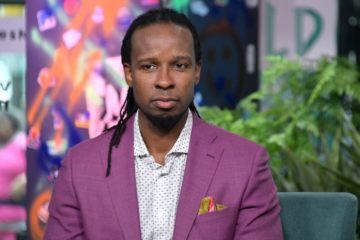 As the origins of our current moral panic about “white supremacy” become more widely debated, we have an obvious problem: how to define the term “Critical Race Theory.” This was never going to be easy, since so much of the academic discourse behind the term is deliberately impenetrable, as it tries to disrupt and dismantle the Western concept of discourse itself. The sheer volume of jargon words, and their mutual relationships, along with the usual internal bitter controversies, all serve to sow confusion.
As the origins of our current moral panic about “white supremacy” become more widely debated, we have an obvious problem: how to define the term “Critical Race Theory.” This was never going to be easy, since so much of the academic discourse behind the term is deliberately impenetrable, as it tries to disrupt and dismantle the Western concept of discourse itself. The sheer volume of jargon words, and their mutual relationships, along with the usual internal bitter controversies, all serve to sow confusion.
This conceptual muddle also allows everyone to have their own definition and gives critical theorists the opportunity to denounce anyone from the outside trying to explain it. So it may be helpful to home in on what I think is a core point. No, I’m not a trained critical theorist. But no one should have to be in order to engage a field of thought with such vast public ramifications. But I have spent many years studying political theory, which is why, perhaps, I am so concerned. And, for me, the argument is not really about race, or gender, or history, or identity as such.
More here. And a primer on Critical Race Theory from The Factual here.
Rezo Gabriadze (1936 – 2021)
Sunday Poem
Revisions
Before the poet was a poet
nothing was reworked:
not the smudge of ink on twelve sets of clothes
not the fearsome top berth on the train
not a room full of boxes and dull windows
not the cat that left its kittens and afterbirth in a pair of jeans
not doubt.
Before the poet was a poet
everything had a place:
six years were six years parallel lines followed rules
like obedient children
[the Dewey Decimal System]
homes remained where they’d
been left.
Before the poet was a poet
many things went unseen:
clouds sometimes wheedled a ray out of the sun| parents kept photographs under
their pillows| letters never said everything they wanted to| lectures were interrupted
by a commotion of leaves | | every step was upon a blind spot.
.
by Sridala Swami
from: Escape Artist
Aleph Book Co., New Delhi, 2014
Violetta Elvin (1923 – 2021)
The Truth is in the Soil
From Lensculture:
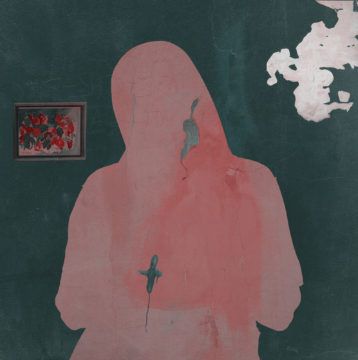 In many of our contemporary cultures, the realities of death feel unapproachable. Traditional grieving methods are routinely relegated to the margins, replaced by the medical promise of comforting objectivity. But for those of us confronted by the ebb and flow of complex emotions in the wake of death, the assurance of objectivity falls short. For Ioanna Sakellaraki, this evolving emotional storm, experienced head-on in the wake of her father’s death, is what prompted her to pursue a project on bereavement, finding ways to document the organic chaos that she describes as “the passageway into a liminal space of absence and presence.”
In many of our contemporary cultures, the realities of death feel unapproachable. Traditional grieving methods are routinely relegated to the margins, replaced by the medical promise of comforting objectivity. But for those of us confronted by the ebb and flow of complex emotions in the wake of death, the assurance of objectivity falls short. For Ioanna Sakellaraki, this evolving emotional storm, experienced head-on in the wake of her father’s death, is what prompted her to pursue a project on bereavement, finding ways to document the organic chaos that she describes as “the passageway into a liminal space of absence and presence.”
When Sakellaraki moved away from her home in Greece over a decade ago, she never anticipated the circumstances that ultimately led her back to that formative place. “When I returned to Greece after my father’s death, I slowly began unravelling a personal narrative of loss, interweaving the fabrications of grief in my family and culture, looking into how my work might untangle the endless remaking that surviving loss entails.”
When a community experiences death, it’s difficult to prepare for the multiple layers of grief that emerge, both private and collective processing that each require attuned navigation. Across time, in a number of communities around the world, processing grief was left to experts, often referred to as moirologists—professional mourners—who performed ancestral fate songs at a service. Growing up, Sakellaraki was aware of these traditions, but felt detached and afraid of them in her contemporary context.
More here.
Yoshi Wada (1943 – 2021)
Milk tea’s colonial roots make it a surprising symbol for activists
Simon Willis in 1843 Magazine:
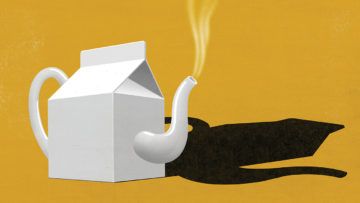 When Vachirawit Chivaaree, a popular Thai actor, posted four pictures of cityscapes on Twitter last year with the caption “four countries”, he knew what he was doing. One of the four he listed was Hong Kong, which, as furious Chinese nationalists were quick to point out, is not a separate country, despite its special status within China. Pro-democracy activists from Hong Kong and Taiwan sprang to the defence of Chivaaree, who was subjected to a fusillade of abuse. Among their responses was a meme: cartoons of milky drinks from Hong Kong, Taiwan and Thailand “holding hands” in solidarity against authoritarian government in all its forms.
When Vachirawit Chivaaree, a popular Thai actor, posted four pictures of cityscapes on Twitter last year with the caption “four countries”, he knew what he was doing. One of the four he listed was Hong Kong, which, as furious Chinese nationalists were quick to point out, is not a separate country, despite its special status within China. Pro-democracy activists from Hong Kong and Taiwan sprang to the defence of Chivaaree, who was subjected to a fusillade of abuse. Among their responses was a meme: cartoons of milky drinks from Hong Kong, Taiwan and Thailand “holding hands” in solidarity against authoritarian government in all its forms.
The symbolism was clear. Whereas people in South-East Asia drink their tea and coffee with milk, the Chinese prefer their oolong and other brews unadulterated by dairy – or so their detractors claimed. The meme became a movement, the Milk Tea Alliance. Its members swap tips about dodging internet firewalls and avoiding arrest. The group includes Hong Kongers and Taiwanese worried about the looming shadow of the Chinese Communist Party (China considers Taiwan to be a renegade province that will one day be reclaimed). It also unites Thais critical of the country’s military government and protesters in Myanmar opposed to the junta’s coup in February. When Twitter launched a new milk-tea emoji in April, the movement received a boost and popularised the milk-tea meme. But the current symbolism of milk tea belies the drink’s complex past.
More here.
Saturday, June 12, 2021
Almost exactly 11 years ago, blogger Ed Yong won the $1,000 3QD Science Writing Prize, and now he has won a well-deserved Pulitzer
Congratulations, Ed!
From The Atlantic:
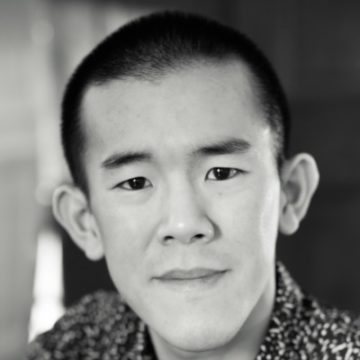 The Atlantic staff writer Ed Yong has won the 2021 Pulitzer Prize for Explanatory Reporting. He was awarded journalism’s top honor for his defining coverage of the coronavirus pandemic and how America failed in its response to the virus. This is The Atlantic’s first Pulitzer Prize.
The Atlantic staff writer Ed Yong has won the 2021 Pulitzer Prize for Explanatory Reporting. He was awarded journalism’s top honor for his defining coverage of the coronavirus pandemic and how America failed in its response to the virus. This is The Atlantic’s first Pulitzer Prize.
Yong anticipated the course of the pandemic, clarified its dangers, and illuminated the American government’s disastrous failure to curb it. “Despite months of advance warning as the virus spread in other countries, when America was finally tested by COVID-19, it failed,” he wrote in March 2020. (That story, “How the Pandemic Will End,” is one of the most-read pieces in Atlantic history.)
More here.
Bataille, Land, Fisher & Zombies with John Cussans
On ‘Everyone Knows Your Mother Is a Witch’
Carolyn Kellogg at the LA Times:
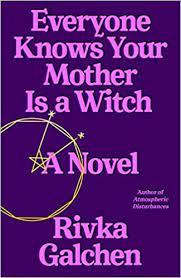 When challenged, former President Donald Trump often claimed he was the victim of a witch hunt, even “the greatest Witch Hunt in American history.” This was not just an exaggeration but an inversion: He was being investigated in search of truth, while in a witch hunt, a forgone guilty verdict is reached by twisted interpretation and fantastical invention.
When challenged, former President Donald Trump often claimed he was the victim of a witch hunt, even “the greatest Witch Hunt in American history.” This was not just an exaggeration but an inversion: He was being investigated in search of truth, while in a witch hunt, a forgone guilty verdict is reached by twisted interpretation and fantastical invention.
Especially in 1617 in Germany, the setting of Rivka Galchen’s delightfully funny second novel, “Everyone Knows Your Mother Is a Witch.” Katharina is a sharp-tongued grandmother who leads a quiet life until she catches the attention of a handful of townspeople who drunkenly accuse her of witchcraft. Did she make a woman unable to bear children? Was she responsible for the death of a hog? Katharina dismisses this as nonsense, but the town pulses with rumor, allegiances ebbing and flowing, and the case against her is serious. Her daughter-in-law Gertie delights in reading scandal sheets that describe the torture and killing of other women accused of witchcraft. One is so frightening that Katharina skips town to stay with her son.
more here.
